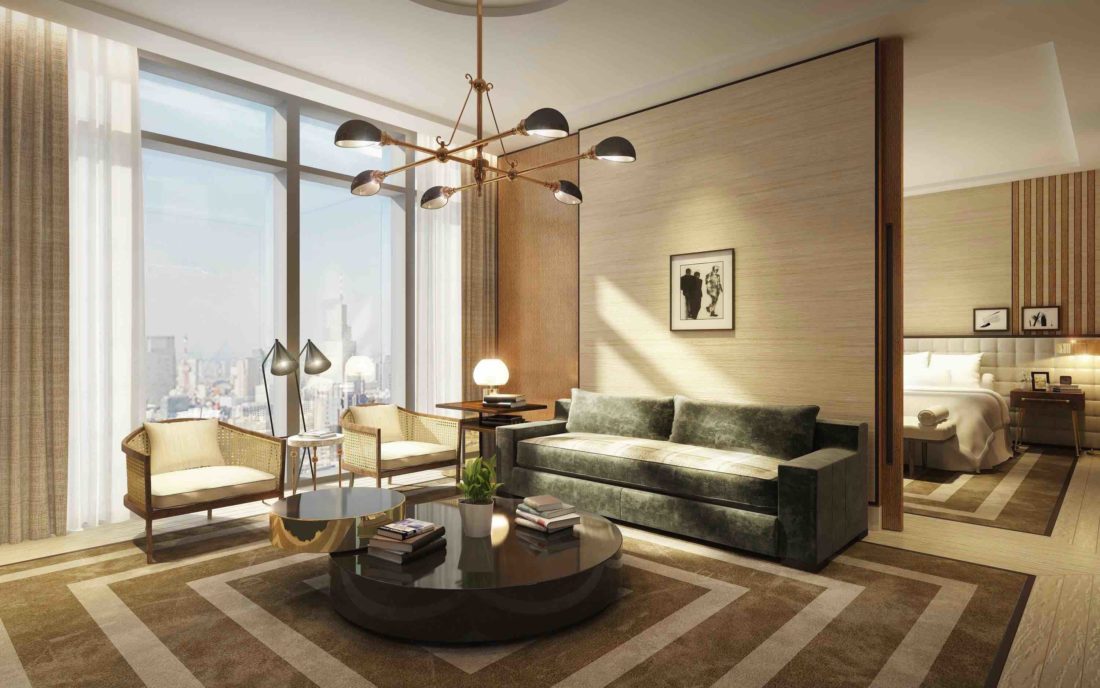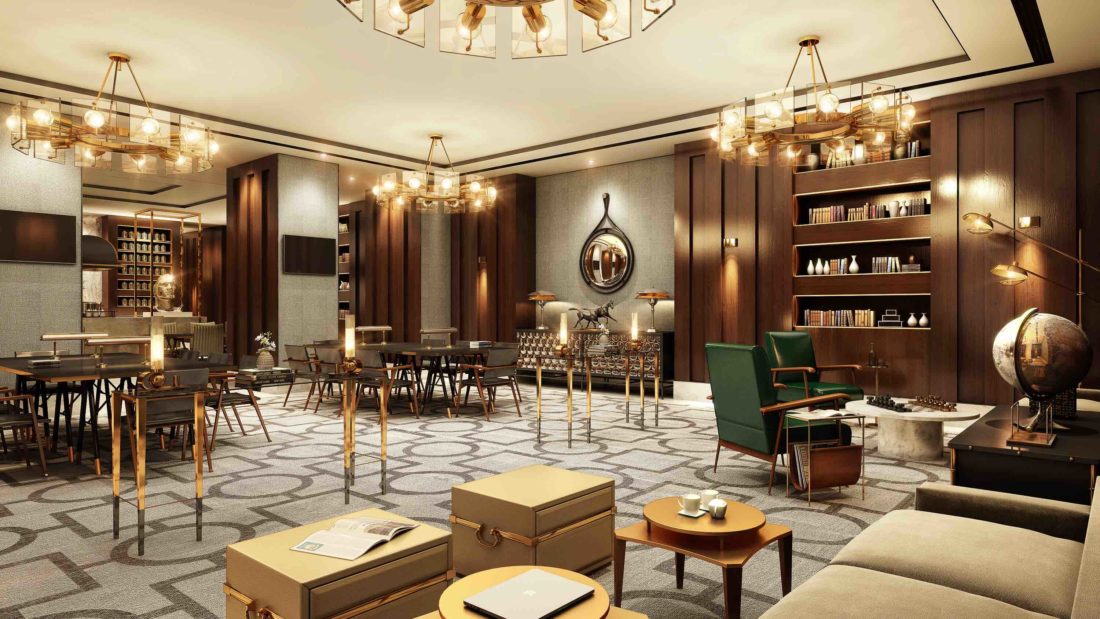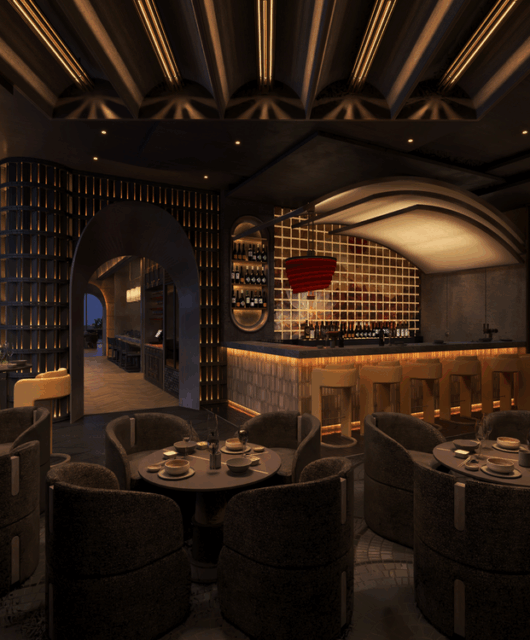
Gear up for the world of luxury in hospitality—Waldorf Astoria DIFC gets ready for a summer 2019 opening. The interiors are inspired by the iconic architecture, lifestyle and mid-modern style of the 1960s. The hotel exudes a contemporary elegance and understated luxury, shaping up to be a destination of ultimate comfort and style.
The lead interior design company for the property, the first Waldorf Astoria city hotel in the UAE, is SRSS (Smallwood, Reynolds, Stewart, Stewart), while design firm— LW handled the design for the two main dining and social venues in the hotel; Bull & Bear and St Trop. Noted local Lebanese artist, Imad Bechara was also commissioned to dress the hotel with his stunning artwork.
Victor Chalfoun, general manager for Waldorf Astoria DIFC, commented: “The hotel’s design has been heavily influenced by the 1960s – a revolutionary movement, pioneered in New York, when new ideas flourished and people dared to experiment. We wanted to honour this decade with every line, shape, colour, and form, with the hope that our guests will have the opportunity to experience an era gone by.”
Madison Avenue in the 1960s
Waldorf Astoria Hotel DIFC is unlike anywhere in Dubai. The elegant interior designs will take guests back to the 196’s “Mad Men” era – when New York city brimmed with a unique energy, and bustled with ambitious movers & shakers. As a destination within the destination of the prestigious Dubai International Financial Centre, Waldorf Astoria DIFC is perfectly primed to host connoisseurs from around the world. Set across the 18th to 55th floors of the Burj Daman development, the building style is reminiscent of Madison and 5th Avenue in New York during the late 1950s and early 1960s. Complementing the minimalist furniture and multifunctional design is the clever mix of materials handpicked to ensure a slick, contemporary look. Marble, ebony, walnut, brass, and bronze have all been generously used to add to the luxurious feel of the hotel.
Lavish yet unpretentious guestrooms and suites
In the guestrooms, volakas marble has been used to give a practical yet premium look. In addition, light oak timber finishes are prevalent together with ebony trims. The dark colour scheme in the executive and junior suites includes brown oak, walnut, and metal bronze to give an executive, formidable identity. The presidential suite and three-bedroom apartments are resplendent with marble finishes that have been upgraded using black forest, magma black, corteccia, travertine, and ash blue to add a touch of intensity. The flexible spaces, enhanced by the floor to ceiling windows, make the rooms comfortable and liveable. The walls are a mix of wood panels and textured material that enrich the rooms’ contemporary aesthetic.
18th floor takes centre stage
The 18th floor is the heartbeat and social hub of the hotel. Comparisons can be made with Via Veneto – which was the centre of Roman social life throughout the 1950s and 1960s. Its alluring bars and restaurants were a favourite haunt for Hollywood stars as well as the elite from Italy and beyond.
At Waldorf Astoria DIFC, the reception, restaurants, lounges, swimming pool, and spa are all located across one stretch of floor, however SRSS’s clever design layout ensures plenty of open space to mingle and discover.
Bull & Bear is the hotel’s signature restaurant, which uses a rich colour palette incorporating a mix of timber, metal, and leather paired with contemporary classic furniture for a masculine look and feel.

The rooftop lounge, St Trop has been influenced by the essence of St Tropez. Timber decking inspired by luxury yachts sets the tone for a natural colour palette accented with aquatic colour. The chic, contemporary, and versatile furniture helps to seamlessly transform St Trop from a place to catch some afternoon sun to a space to socialise at night.
Making an impression
The clever use of statement pieces throughout the hotel adds to the sense of allure and nostalgia associated with one of the most popular design eras. The iconic Waldorf Astoria clock was custom-made by Smiths of Derby, clockmakers established in Derbyshire, UK since 1856, and took one year to manufacture. The design intent was loosely based on art deco with stylised peacock feathers featuring in the design as a nod to the Peacock Alley in which it resides.







